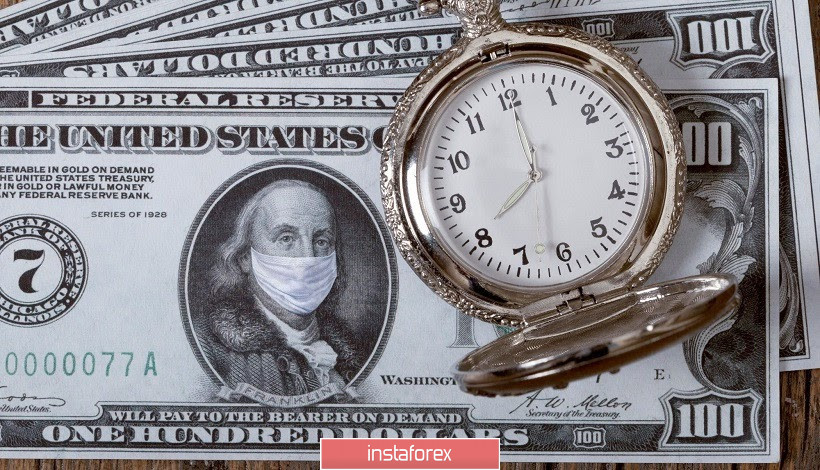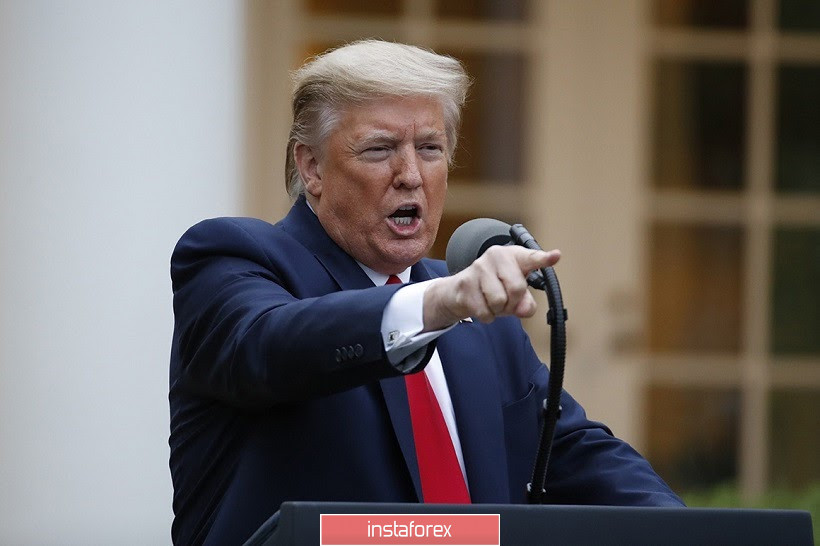The bulls of the EUR/USD pair could not hold their positions: after reaching the high of 1.0990, the price turned around and actively went down, updating the current week's low along the way. It should be noted that in this case, the downward movement is not because the euro is falling in price, but due to the widespread strengthening of the US currency – the dollar index suddenly lifted its spirits after several days of depression and confidently walked towards the hundredth figure, reflecting the increased demand for the greenback throughout the market. In all dollar pairs without exception, the greenback showed character and turned the price movement in the opposite direction. Looking ahead, it should be said that the dollar's position also looks unstable, despite the momentum of growth. The fundamental picture for the EUR/USD pair (and in general, for the pairs of the "major group") is changing at a kaleidoscopic speed, so now you should not rush to invest in the US currency – too sharp movements are shown by the greenback, which indicates the general nervousness of market participants.

If we generalize all the fundamental factors, we can come to a fairly obvious conclusion that the dollar has recalled itself due to the growth of anti-risk sentiment in the foreign exchange market. Traders took the report of the International Monetary Fund, which is full of pessimistic conclusions, to heart. The Fund called this year the most disastrous year for the world economy since the Great Depression almost a century ago. According to their calculations, world GDP will fall by 3%. If we talk about key countries, the US economy will slow down by almost 6%, the eurozone – by 7.5%, and China's GDP growth by the end of 2020 will be only 1.2%. The IMF stressed that, due to the large-scale, comprehensive and long-term lockdown, the current crisis is not like any of the previous ones. If we compare the coronavirus crisis with the events of 2008-2009, then the world economy contracted by only 0.8%, while this time the losses will be much more serious. In the same spirit, the entire IMF report has been compiled - with the appropriate layouts and ratings for hotel countries.
However, it was not without a spoonful of honey: according to the Fund's economists, next year world GDP will set a 40-year growth record, rising at once by almost six percent. China and India will be the main engines of this rise. Their economies will not shrink this year (although growth will slow) and will expand by 9.5% and 7.8% in 2021, respectively. In other words, even in such a pessimistic report, the IMF pointed to "encouraging signals" that the epidemic will be overcome in the foreseeable future. According to the IMF, outbreaks of new diseases will peak in most countries in the second quarter of this year and will almost completely disappear in the second half of the year.
Despite such optimistic estimates, the market decided that "the glass is half empty", rather than the opposite – the demand for the dollar as a protective asset has increased significantly. But can we trust the growth of the US currency amid such a mixed report from the IMF? This is a rhetorical question, of course, but I think we should wait for at least a confirmation of this growth. After all, many fundamental factors still speak in favor of strengthening risk sentiment and, consequently, in favor of EUR/USD growth.
First, Europe has decided to take the path of easing the quarantine regime. Similar decisions (though to varying degrees) were made in Spain, Italy, the Czech Republic, Austria, Denmark, and Norway. The quarantine was extended in France and Britain – but they are also thinking about a strategy for returning to a normal rhythm of life. In addition, the European Union today officially defined three criteria for lifting quarantine restrictions. According to the head of the European Commission, Ursula von der Leyen, a kind of "road map" includes key prerequisites: first, it is a significant slowdown in the spread of coronavirus, second, it is sufficient capacity of the health system and third - the ability of post-quarantine surveillance and monitoring.
Trump plans to open the US economy "soon" (despite the protests of some governors), even when the coronavirus is still rampant there.

Thus, the fundamental picture has a black-and-white background: on the one hand, the IMF's weak forecast for the current year, overcoming the 2-million mark of Covid-19 patients, termination of US funding for WHO and negative dynamics in oil prices. On the other hand, the easing of restrictive measures in many European countries against the background of reaching the so-called "plateau level", good data from China (the volume of exports and imports fell not as much as expected by experts), and finally a positive forecast of the IMF for world economic growth next year. In addition, the dollar today could not continue its rally after the publication of disappointing data from the US. It became known that US retail sales fell by 8.7% in March (with a forecast decline of 8%), and industrial production collapsed to -5.4% (on a monthly basis).
All this suggests that the downward momentum of the EUR/USD pair could be temporary. Buyers now need to return above 1.0950 - in this case, it will be possible to consider long positions to the round level of 1.1000 or to the resistance level of 1.1010 (Kijun-sen line on the daily chart). If the bears do not let the pair go into the area of the ninth figure at the end of the day, then a second descent to the weekly low, that is, to the 1.0856 level, is likely.





















